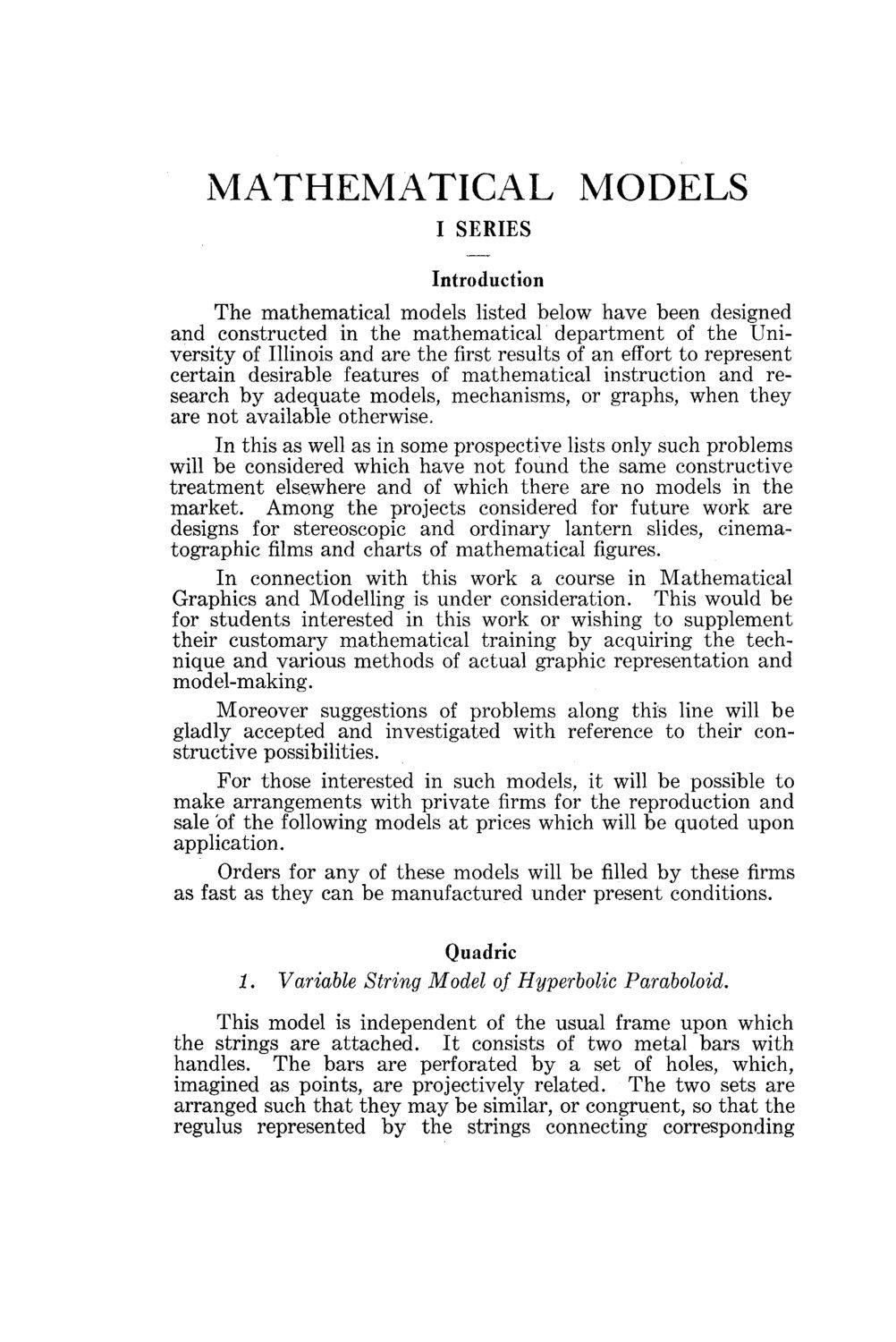| |
| |
Caption: Mathematical Models by Arnold Emch - Series 1 (1920)
This is a reduced-resolution page image for fast online browsing.

EXTRACTED TEXT FROM PAGE:
M A T H E M A T I C A L I SERIES Introduction M O D E L S The mathematical models listed below have been designed and constructed in the mathematical department of the University of Illinois and are the first results of an effort to represent certain desirable features of mathematical instruction and research by adequate models, mechanisms, or graphs, when they are not available otherwise. In this as well as in some prospective lists only such problems will be considered which have not found the same constructive treatment elsewhere and of which there are no models in the market. A m o n g the projects considered for future work are designs for stereoscopic and ordinary lantern slides, cinematographicfilmsand charts of mathematical figures. In connection with this work a course in Mathematical Graphics and Modelling is under consideration. This would be for students interested in this work or wishing to supplement their customary mathematical training by acquiring the technique and various methods of actual graphic representation and model-making. Moreover suggestions of problems along this line will be gladly accepted and investigated with reference to their constructive possibilities. For those interested in such models, it will be possible to make arrangements with private firms for the reproduction and sale of the following models at prices which will be quoted upon application. Orders for any of these models will befilledby these firms as fast as they can be manufactured under present conditions. Quadric 1. Variable String Model of Hyperbolic Paraboloid. This model is independent of the usual frame upon which the strings are attached. It consists of two metal bars with handles. The bars are perforated by a set of holes, which, imagined as points, are projectively related. The two sets are arranged such that they m a y be similar, or congruent, so that the regulus represented by the strings connecting corresponding
| |